
Tonga media guide
An overview of the media in Tonga, including links to broadcasters and newspapers.
2023-08-23 16:46

Japanese scientists hoping for a message from alien life imminently
Scientists are hoping to receive a message from aliens imminently, after waiting for 30 years. But the chances are slim: the message was sent to a star that does not appear to have any planets, and there will only be an hour to hear the message. It is 40 years since Japanese astronomers Masaki Morimoto and Hisashi Hirabayashi composed a message intended to show what humans are like and how life works on Earth, and send it into the cosmos. They did so using a telescope at Stanford University and sent a message to Altair, a star 16.7 light years away that could potentially have life around it. Decades on, a team led by Shinya Narusawa at the University of Hyogo will use a large Japanese telescope to try and see if anything is sending back a reply to our message. Astronomers believe that it is conceivable a reply would come around now, given the distance to the star and the time that has elapsed. They will listen for messages coming from the star on 22 August. That date was chosen because of its significance in Japan’s Tanabata star festival, which symbolically celebrates the meeting of two deities Orihime and Hikoboshi, the latter of which is represented by Altair. Narusawa is hopeful that aliens are out there somewhere and that the message could have really been sent towards alien life around the distant star. “A large number of exoplanets have been detected since the 1990s,” he told Japanese newspaper The Asahi Shimbun. “Altair may have a planet whose environment can sustain life.” The original message was sent on 15 August, 1983, as part of a collaboration with a Japanese weekly comic anthology. But the attempt to contact aliens never seemed entirely serious, and so any scientists involved are unlikely to be disappointed. In 2008, when the email was unearthed, Hirabayashi admitted that the pair had been drunk when they came up with the idea of sending the message, according to Gizmodo at the time. “I believe in aliens, but they are very difficult to find,” he said then. He also noted that he had received an array of messages from schoolchildren about the message, which had made sending it worth it. Read More Exact number of people needed for a Mars colony found – and it’s less than you think Strange hidden ‘structures’ hundreds of metres deep discovered on dark side of moon Russia’s Luna-25 spacecraft crashes into moon in failed mission
2023-08-22 00:27
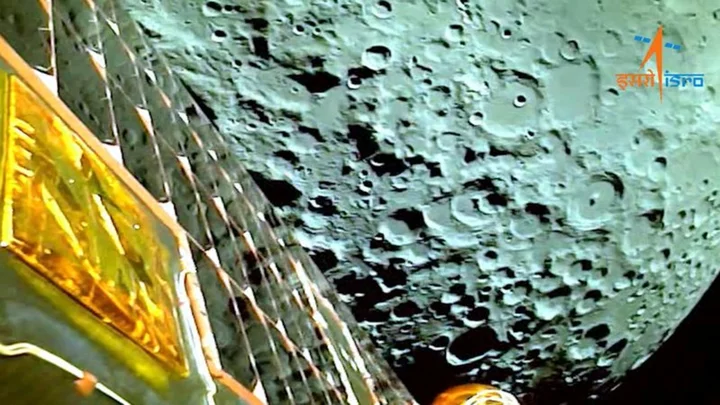
Moon landing anticipation builds for India after Russia's crash
By Nivedita Bhattacharjee BENGALURU India's space agency on Monday released images its spacecraft took of the far side
2023-08-21 15:52

Bitcoin price on the skids as investors pull $1 billion from crypto
The price of bitcoin has dropped nearly 9% since early Thursday as part of a broader sell-off of risky assets. A report that Elon Musk's Space X had dumped the cryptocurrency stoked investors' fears.
2023-08-18 22:00

Analysis-Biden's China tech curbs to keep investors sidelined, fearing more steps
By Kane Wu and Michael Martina HONG KONG/WASHINGTON (Reuters) -President Joe Biden's move to prohibit some U.S. technology investments in
2023-08-10 18:54
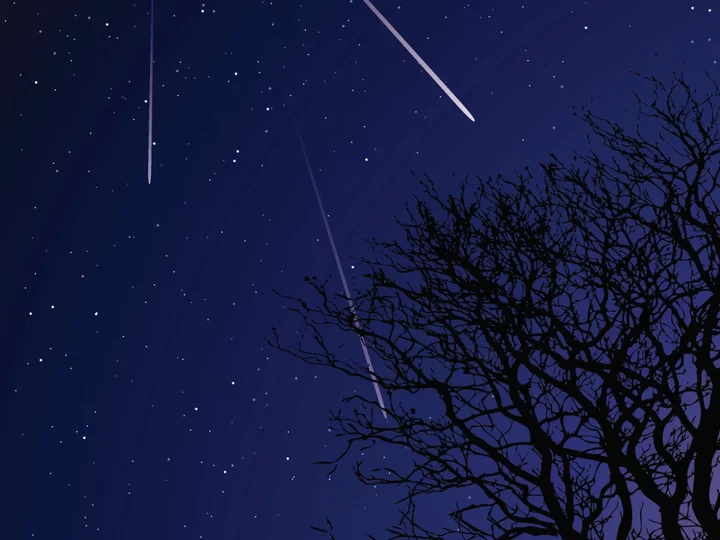
Perseids 2023: Meteor beacon offers unique way to observe spectacular shower over UK
A group of amateur radio enthusiasts have set up a beacon in the UK that allows anyone to observe meteors as they burn through the Earth’s atmosphere. The UK Meteor Beacon project uses radio signals to identify meteorites as they pass through a 400 km-wide section of sky over England and Wales. The data is then displayed on a live online feed, with meteors appearing as blue streaks that emit a ping followed by a trailing pitch. The system captures more than 100 meteors every hour, even during times of relatively low activity. For the upcoming Perseid meteor shower, which peaks on 12 August, the frequency could be in the region of thousands per hour as Earth passes through the tail of the Swift-Tuttle comet. Unlike optical astronomy, the use of radio signals mean that meteors can be observed in nearly any weather conditions at all hours of the day and night. It also means that the system can pick up smaller meteors that may not appear as ‘shooting stars’ to the naked eye. This method of observation could potentially lead to the discovery of new meteor showers, which could then be tracked to uncover previously unknown comets. The radio transmitter is based at the Sherwood Observatory near Mansfield in Nottinghamshire, however receivers can be placed anywhere in the country. “The transmitter is illuminating the sky above Mansfield with radio signals that can be reflected by meteors and their trails,” Brian Coleman, who designed the system’s hardware and has a receiver in his back garden, told The Independent. “Even outside the Perseids and other meteor showers we’re seeing them at a rate of two a minute – and we can observe them day and night no matter what the weather. Only thunderstorms and lightning can interfere with it.” It is the first meteor beacon system run by amateur radio and astronomy volunteers in the UK, and has already received funding from the Radio Society of Great Britain and the British Astronomical Association. It has also gained the attention of academic and citizen scientists keen on studying meteors. Setting up the beacon transmitter is only the first part of the project, with the four-person team now planning to design and deploy echo receivers that can be distributed throughout the country at distances of up to 1,200 km from the Sherwood Observatory. The receivers can be built for as little as £10, according to Mr Coleman, using plastic pipes and other materials found in DIY stores. His hope is that the low cost will encourage schools to set up their own receivers to develop STEM-related projects that will encourage students to explore radio engineering and astronomy. Observations of the meteors from different directions can also be used to calculate the location and trajectory of meteors, with the team currently trying to establish whether it is possible to triangulate the meteors by studying the horizontal lines and blue smudges that appear on the waterfall display. Such measurements are currently possible with military-grade pulse radar systems, but it has never been done before on this scale. If it is possible, then knowing the speed and direction of the meteors will allow them to calculate the landing spot of any meteors that make it through the Earth’s ionosphere without burning up completely. These samples can then be studied to offer a better understanding of the universe. “The ultimate ambition is to have a system like Blitzortung, which uses a network of ground-based detectors to track live lightning strikes around the planet,” Mr Coleman said. “If successful, we could observe meteors entering Earth’s atmosphere in real-time throughout the world – but there’s still a lot of work to do before we achieve that.” Read More Amateur astronomers make ‘major breakthrough’ in saving Earth from asteroids ‘It’s becoming like an airport’: How SpaceX normalised rocket launches Perseid meteor shower offers best chance to see a ‘shooting star’ in 2023 Watch live: Russian cosmonauts step out of ISS to perform spacewalk Earth hit by powerful ‘X-1’ solar flare, after fears of ‘cannibal’ blast
2023-08-10 05:27
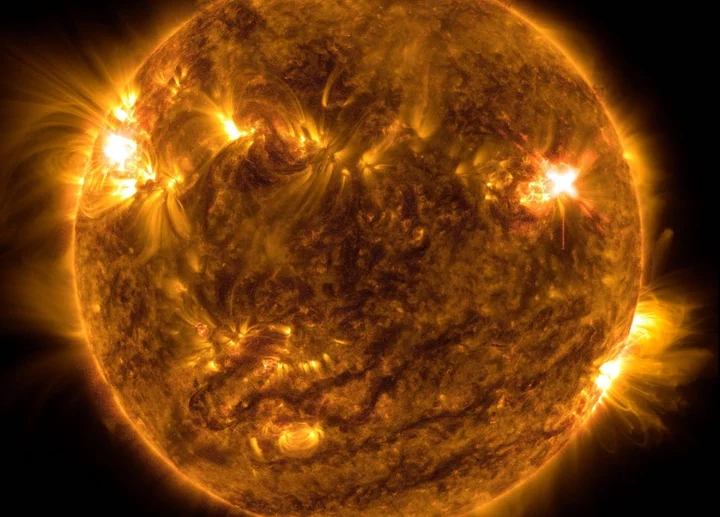
Earth hit by powerful ‘X-1’ solar flare, after fears of ‘cannibal’ blast
The Earth narrowly avoided being hit by a “cannibal” solar flare – but has been lashed by powerful enough blasts to disrupt communications. In recent days, space weather forecasters had warned that the Earth could be hit by a range of powerful flares that have been ejected from the Sun. Particular warnings focused on the “cannibal” flare, which was forecast to potentially glance Earth. “Cannibal” solar flares are formed when a later blast catches up with one that was ejected earlier, and consumes it. The energy of the two is combined, which can make them far more powerful than flares that are released on their own. The latest cannibal flare appears to have missed Earth, however. Forecasts had suggested that it was only expected to glance the planet, and so a miss was perhaps likely. The Earth was struck by an X-class flare, however. That is the most potent category of solar flares, and can cause considerable disruption on Earth. This time around, space weather experts warned that the blast was enough to disrupt radio and navigation signals in North America. It was measured as an R3 blackout – on a scale that runs from 1 to 5 – which meant that areas in the US and Canada as well as on the Pacific Ocean were at risk of having radio signals and navigation disrupted. The Sun moves through a cycle of activity every 11 years, during which it releases more and less “coronal mass ejections” or CMEs, and it is currently in a particularly busy part of that cycle. Those CMEs can bring energetic flares that hit Earth – and could one day cause considerable problems on the planet, disrupting energy grids and other important infrastructure. The latest flare was measured at X1.5 and is the 20th such X flare to have hit the Earth in its current period. It came out of a particularly active part of the Sun, and followed other, weaker flares, the UK’s Met Office said. Nonetheless, experts said the “minor ongoing solar radiation storm” was “waning” and that it did not expect significant disruption in the coming days. Read More Giant space ‘umbrella’ tethered to asteroid could protect Earth from climate crisis James Webb Space Telescope captures new images of the Ring Nebula Massive solar storm strikes Earth, Moon and Mars together for first time in history
2023-08-09 23:59
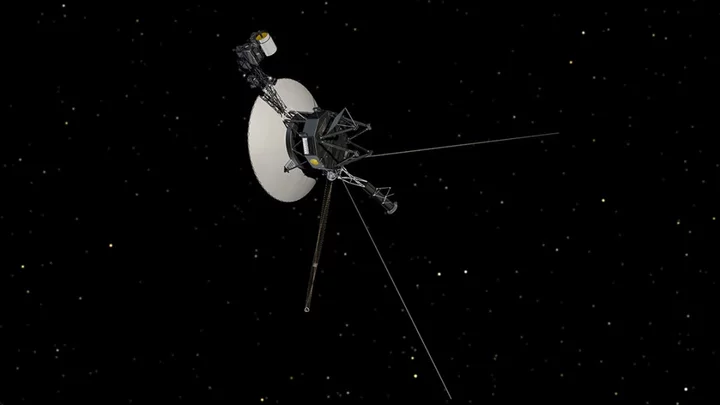
Voyager 2: Nasa receives ‘heartbeat’ signal from missing spacecraft
Nasa has received a “heartbeat” signal from its Voyager 2 spacecraft – but it is still lost in space. Over the weekend, Nasa announced that it had lost contact with Voyager 2, which was launched in 1977 and is now hovering on the edge of the solar system. The space agency had inadvertently sent a message to the craft that instructed it to turn its antenna two-degrees from Earth. That in turn meant that it lost contact with the Deep Space Network, or DSN, a collection of ground-based antennas that allow for contact with distant spacecraft. Engineers feared that they would not hear from Voyager 2 until October at the earliest. Then, it will automatically adjust itself, resetting its orientation and pointing the spacecraft back towards the Earth, when the space agency hoped it would make contact. But Nasa has now heard a “carrier signal” from Voyager 2, sent back as the Deep Space Network scanned the sky. The space agency compared the signal to a “heartbeat”, in that it confirms that the probe is still safe and sending messages back down to Earth. Engineers will now try and send commands to Voyager 2, instructing it to re-orient itself and point back at Earth. If that happens then it will be able to continue on again as normal, flying out into interstellar space and providing scientists with information as it goes. The instructions might not get through, however. If that happens then engineers will be powerless to correct their mistake. That will mean they will be back to waiting until October, which will bring the point at which the spacecraft’s software will automatically tell it to reset its direction. Read More Giant space ‘umbrella’ tethered to asteroid could protect Earth from climate crisis Songs, books and films inspired by the blue moon ESA’s Euclid space telescope captures glittering galaxies and stars in first images
2023-08-02 02:20

Can You Spot the UFO in This Space-Themed Brainteaser?
The truth is out there, but you may have to search every corner of the image before solving the puzzle.
2023-07-31 22:17

Netflix ends password sharing in 'big market' India
Only users from a single household will be able to use an account, the streaming giant has said.
2023-07-20 13:58
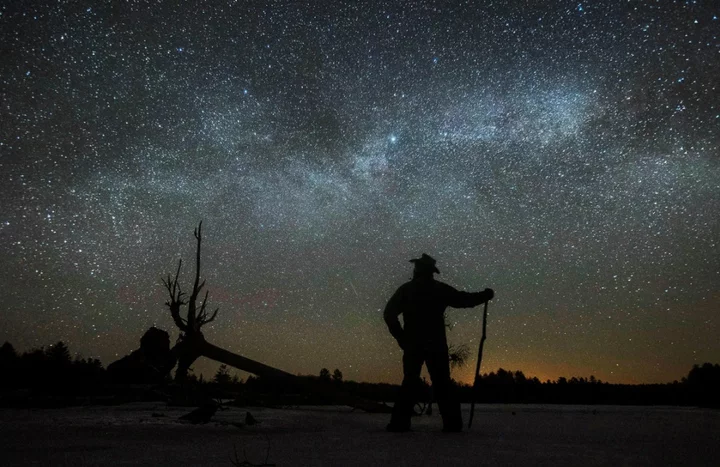
A mysterious source has been sending radio signals to Earth from space for decades
An unknown source has been sending radio blasts towards Earth since at least 1988, scientists say. The researchers do not know what object is sending the radio waves towards Earth. The nature of the waves is such that they do not conform with any models that attempt to explain it. For 35 years, the source has been sending out regular 20-minute blasts of energy that vary considerably in their brightness, researchers say. The emissions appear something like the blasts that come out of pulsars or fast radio bursts, which last for milliseconds to several seconds. But the newly discovered source sends radio signals that pulsate on a period of 21 minutes – something previously thought impossible by expected explanations. Pulsars are neutron stars that spin around quickly, throwing out radio blasts as they do. When one crosses Earth, the emissions can be picked up very briefly and brightly, like being in the path of the light from a rotating lighthouse. Scientists believe that process can only work if the magnetic field of the pulsar is strong, and it is rotating quickly enough – if not, there would not be enough energy to see the pulsar from Earth. That has led to the development of the “pulsar death line”, which suggests that sources must be spinning fast and strong enough to be detected. The newly discovered object named GPMJ1839-10, however, is way beyond that death line. If it is a pulsar, then it seems to be operating in ways that scientists thought impossible. It could also be a highly magnetised white dwarf or magnetar, an extra kind of neutron star with incredibly strong magnetic fields. But they do not tend to send out emissions of this kind, researchers believe. The signals have been detected on Earth since at least 1988, scientists found by going through old records, but they had gone unnoticed by those collecting that data. After the source was detected, researchers checked radio archives and found that the source has been repeating for at least 35 years. Yet more discoveries may be made in this way in the future, said Victoria M Kaspi, a professor of physics at McGill University who did not work on the study. “Only time will tell what else lurks in these data, and what observations across many astronomical timescales will reveal,” she wrote in an accompanying article. That might include some explanation of how unusual the newly discovered source is. By examining whether there are is a similar collection of other objects in the data, researchers might be able to understand the mechanisms behind the newly discovered emissions. The findings are reported in a new paper, ‘A long-period radio transient active for three decades’, published in the journal Nature. Read More Scientists invent self-healing solar panels with ‘miracle material’ Powerful solar flare to disrupt communications, Russians warn New technique represents major breakthrough in search for aliens, scientists say
2023-07-19 23:59
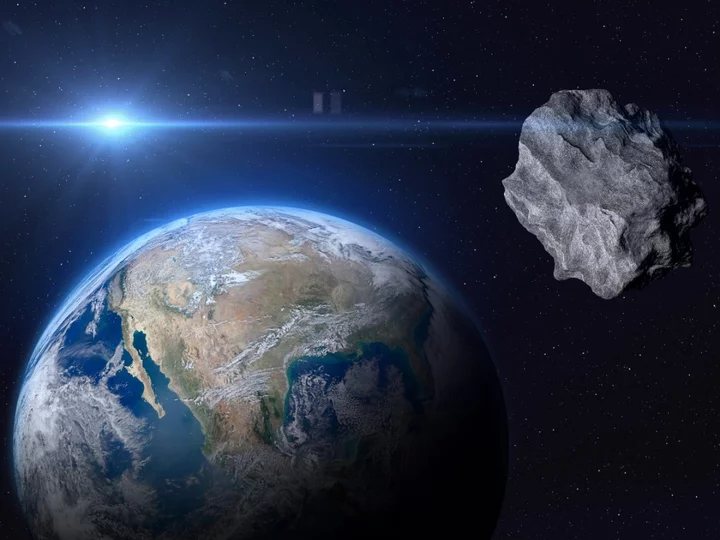
Large asteroid flies close to Earth – and is only spotted days later
Earth narrowly avoided an asteroid that flew past last week – and scientists did not spot the object until it had made its visit. The object, named 2023 NT1, was spotted on 15 July by the Atlas observatory in South Africa. Astronomers there say it was up to 60 metres in size. But at that point it had already made the dangerous bit of its journey: two days earlier, it had swept past Earth, at just a quarter of a distance between us and the Moon. At 60,000 miles away, that is a long way from doing any damage, but relatively close for an asteroid. As such, the asteroid didn’t pose any danger to Earth. But it was an important reminder that truly dangerous asteroids could fly towards Earth – and that we might not spot them until they are too late. That is because many asteroids, including 2023 NT1, fly towards us from the Sun. The bright light of our star can make it difficult to see anything else, especially asteroids that are relatively small at the scale of space. The European Space Agency estimates there could be a million asteroids in the same size range of 30 to 100 metres near Earth. And 98.9 per cent of them are still undiscovered, the space agency says. It has said that shows that there needs to be an improvement in the capabilities of humanity to detect such asteroids. Some are already being worked on, such as ESA’s NEOMIR, which will orbit between the Sun and the Earth and is designed to work as an early warning system for asteroids that would otherwise avoid detection, but will not launch until 2030. The asteroid 2023 NT1, at 60 metres across, is among the largest to have come so close to Earth in recent times. At that size, it could have done significant damage: the Chelyabinsk meteoroid that injured 1,500 people and damaged buildings when it fell to Earth in 2013 was only 20 metres across, for instance. From its approach last week, scientists have been able to catalogue and predict the asteroid’s movements. That should make it possible to track and spot it next time it comes close to Earth. Read More Powerful solar flare to disrupt communications, Russians warn What to expect from India’s Chandrayaan-3 mission to Moon’s south pole India launches historic mission to Moon’s south pole
2023-07-17 23:51
